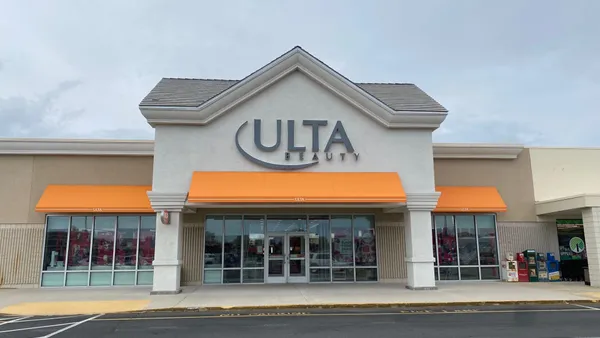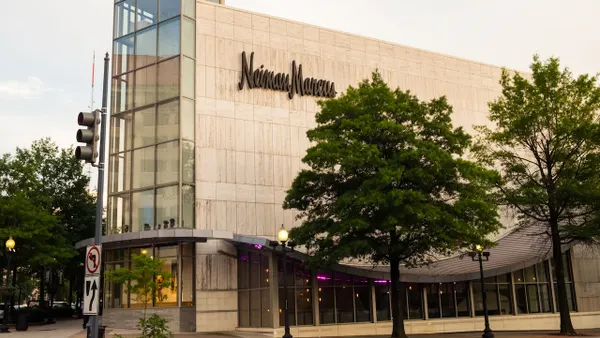Quick Facts
Amazon
-
CEO:
Jeff Bezos
-
Company Revenue:
$136B
-
Founded:
1994
Biggest assets:
Has built out the most-shopped e-commerce platform in the country along with a rapidly growing logistics infrastructure to support it and a highly profitable internet services division.
Biggest move this year:
Acquired Whole Foods for $13.7 billion.
It’s happened numerous times this year: Amazon announces plans to start doing something and then the stock of any company currently doing that very thing falls like a bird clipped with a BB gun.
Amazon plans to start its own meal kit service, and investors flee Blue Apron. Amazon and Sears announce a partnership to sell the diminished Kenmore appliance brand, and the market value of Home Depot, Lowes and other appliance sellers drops by more than $12 billion. Amazon launches an apparel subscription service, and a shadow is cast over Stitch Fix’s IPO.
Amazon buys an upscale grocery store struggling with declining sales — and the world goes bananas.
It's safe to say no single company has had a bigger impact on the retail industry than Amazon.
Once an online bookseller — the company is still that, by the way, having sold 275 million print books last year — Amazon has proven to be insatiable for new categories and lines of business this year. Grocery, restaurant delivery, sportswear... even bars (well, just one, and it’s in Tokyo). There are reports it could even enter the pharmaceutical space soon.
It’s getting harder and harder to say just what Amazon even is anymore. It is, among other things, a retailer, an e-commerce platform for other retailers, a cloud provider, an infrastructure company, a hardware developer and a movie producer.
Regardless of the category, Amazon is a threat. According to a Bloomberg analysis from July, the company was mentioned, incredibly, 635 times by corporate executives over 90 days of earnings calls. (For comparison’s sake, President Donald Trump was mentioned 162 times, according to Bloomberg.) The company’s shadow is driving massive change throughout the industry.
Many retailers have been hustling to adapt and innovate, either to catch up to Amazon or beat it to the punch. Walmart has been spending big money bringing digitally savvy pure players into the fold, including online outdoor retailer Moosejaw, vintage-inspired online women’s apparel Modcloth and menswear site Bonobos. All of those acquisitions are acting as complements to Walmart’s Jet unit, which the retail giant acquired last year for around $3 billion, and which was widely seen as a move to help it catch up with Amazon in e-commerce.
Meanwhile, Target has acquired a same-day delivery company and expanded its Restock efforts in moves many view as efforts to become more Prime-like. It’s also juicing up its mobile app to combine technology with one of its primary advantages over Amazon — i.e., its stores — and using purchase data to tweak assortment, including at its small-format stores targeting younger urban and student shoppers.
Retailers are scrambling to become more experiential to push their brick-and-mortar advantage over Amazon and playing around with technologies such as augmented reality and voice in an attempt to not be left behind.
Data
Amazon’s North American retail sales continue to rise
Source: SEC filingsAnd when companies aren’t hedging against Amazon, they’re joining it. Nike decided in June to sell directly through Amazon’s brand registry, reportedly as a way to clamp down on sales of counterfeits through Amazon’s marketplaces. (A few months later, Amazon was reported to be planning its own brand of active wear.) Ikea also decided to sell through Amazon this year. Kohl’s did the inverse and started housing Amazon products in its stores and accepting returns of Amazon products at some locations.
Oh, and did we mention that Prime Day might have yielded $2 billion in sales for Amazon this year and sparked a rash of tagalong sales by rival retailers? Its private label sales are growing rapidly and estimates put the number of Prime members at 90 million Prime members. (Such figures, though, have been lampooned as wildly inflated by some analysts.)
All that said, Amazon does not dominate the wider retail world (though it does control roughly half of online sales). Its revenue in 2016 was not even one-third that of Walmart’s. In fact, Moody’s analysts pointed out this summer that Amazon "is actually the weakest of the large retailers, excluding sales growth," based on traditional methods of evaluating performance, such as profitability and operating margin. The company has effectively “bought sales” by putting off profits and holding down prices, in Moody’s view.
Customers love those prices and the always-growing stream new goodies and conveniences. And Amazon’s investors have learned to love the turtle’s pace in retail profits. Wall Street has given the company’s stock an off-the-charts price-to-earnings ratio on the promise of future earnings growth. That, in turn, can hurt other retailers in the here and now.
Looking Forward
The e-commerce company has been adding categories and new lines of business at a dizzying clip as it seeks to make Prime membership not just irresistible, but a household necessity. Expect more aggressive and ambitious moves along those lines next year.














